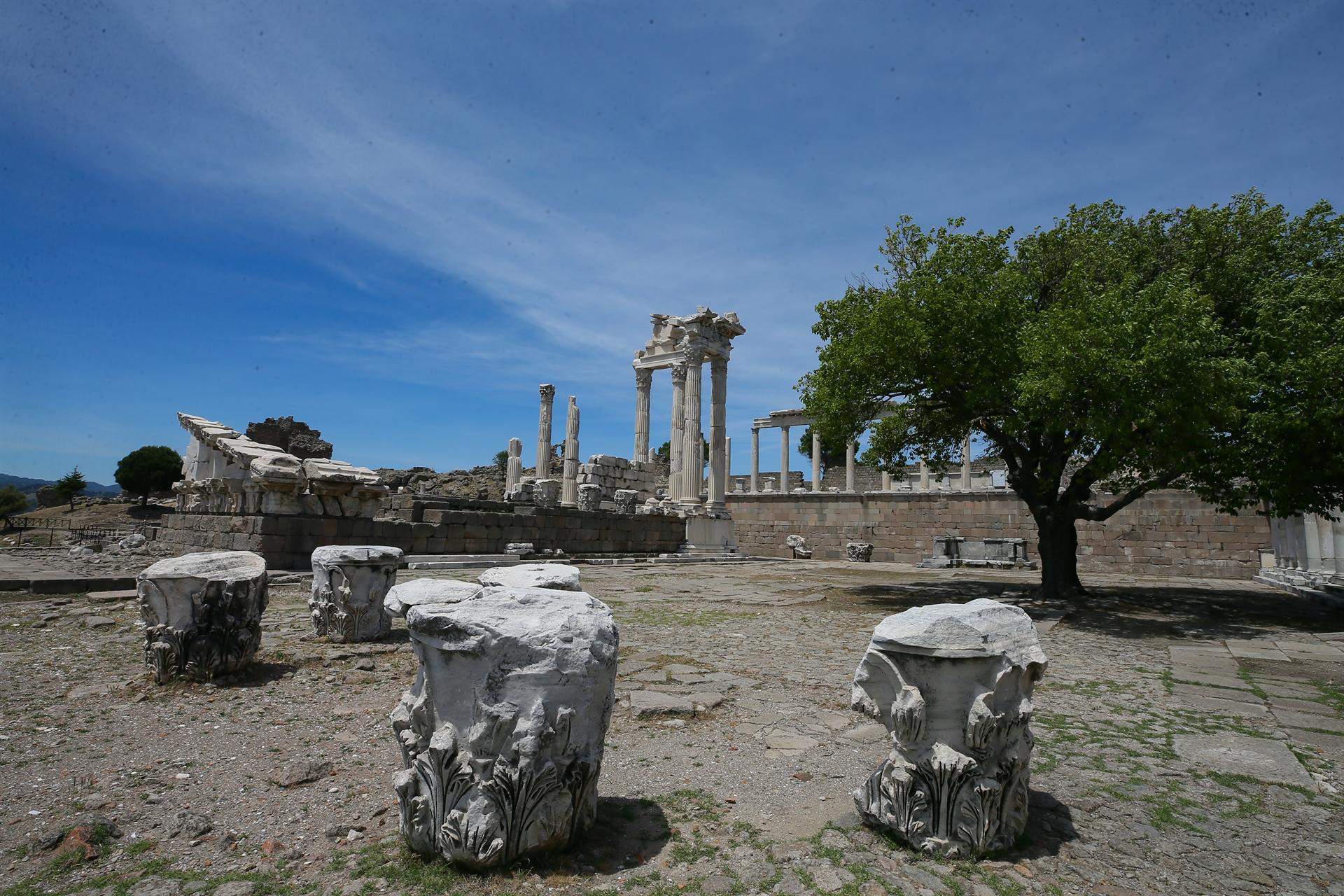New findings set to change Bergama’s history
İZMİR

New finds during excavations in Bergama, a district in the Aegean province of İzmir, are set to shed light on the city’s history, as they indicate civilizations were established in the region earlier than known.
The findings were found during the Lower City excavations in Bergama, which is included in the UNESCO World Heritage List as a Multi-Layered Cultural Landscape Area.
In the ancient city once called Pergamon, the history of the “Upper City,” where kings and commanders live, and the “Lower City,” which has an architectural style that developed with a simpler understanding for the people, is also shaped according to new finds.
During the recent excavations in the Lower City, a perfume oil bottle, which is called “aryballos” and dating back to the 6th-7th century, was found along with a dress pin, known as “fibula” and from the same period.
The presence of these artifacts in the Lower City, which stands out with Roman finds, revealed that civilizations were established much earlier than known in the region.
It was understood that the history of the “Lower City” dates back to the Archaic Period like the Upper City, which is home to magnificent royal palaces, arsenals and great temples.
Speaking to the state-run Anadolu Agency, Bergama Museum director Nilgün Ustura stated that the excavation, drilling and rescue works are continuing in the region.
Stating that they continue the excavations in line with the applications in the archaeological site, which is defined as Lower City, “We are having a busy season. Our work here continues throughout the year, not monthly. The finds uncovered in this process make important contributions to the ancient city of Pergamon.”
Stating that the excavations that have been going on for many years are important in terms of revealing the necropolis borders in the Lower City, Ustura noted that traces of an earlier settlement were encountered in the region besides the Hellenistic and Roman strata.
She said that they tried to determine the range of the city with the excavation works, adding, “It was possible to find early finds from the Hellenistic and Roman periods. We found Archaic finds in the Lower City. This is very important data for us in terms of the city’s history. Archaic materials were unearthed in the Lower City. The excavation area can be expanded in different places with the finds. We encountered the limited Archaic Period finds in the Upper City. It is very important to find the first examples of the period in Lower City. The artifacts are taken under protection.”
The artifacts are exhibited in Bergama Museum after having been registered.
In the archaeological artifacts hall of the museum, the majority of the artifacts exhibited consist of the ones found in the excavations in the Acropolis, Asklepion, Red Courtyard (Basilica) and Musalla Cemetery.
The artifacts found during excavations carried out in Pitane, Myrina, Gryneion ancient cities and the Kestel and Yortanlı Dam lake areas in the immediate vicinity of Bergama and the ones found in the Ertuğrul, Turabey and İnkılap neighborhoods are also exhibited in the museum.
Among the works exhibited in the museum are Yortanlı vessels belonging to the Bronze Age, local productions specific to ancient Pergamon, coins, oil lamps, statues and sarcophagus samples.
















